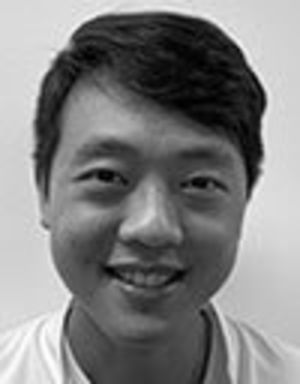AG Ruggieri

Alessia Ruggieri
Group leader
Translational control by RNA viruses
Coordinator TRR319 IRTG
Graduate Program
Phone: +49 (0)6221-56 7761
E-Mail: Alessia.Ruggieri(at)med.uni-heidelberg.de
TRR 319 IRTG - RMaP

Regina Saum
Executive Officer TRR319 IRTG
Graduate Program
Phone: +49 (0)6221-56 310358
E-Mail: Regina.Saum(at)med.uni-heidelberg.de
E-Mail IRTG Office: TRR319-IRTG.MOVI(at)med.uni-heidelberg.de
Research Team Members







Research Interests
Throughout the course of infection, viruses elicit multiple host cell responses, including innate immune response and integrated stress response. The accumulation of viral double-stranded (ds) RNA in the cytosol of infected cells triggers the activation of the stress sentinel Protein kinase R (PKR), which initiates the integrated stress response by phosphorylating the eukaryotic translation initiation factor eIF2α. This results in the rapid suppression of protein synthesis. The assembly of stress granules (SGs) is frequently observed upon viral infections. SGs are biomolecular condensates that form when polysomes disassemble and stalled mRNAs phase separate from the remaining cytosol together with numerous RNA-binding proteins. The diversity of strategies evolved by viruses to control the translation machinery, overcome translational attenuation and interfere with SGs highlights the importance of the integrated stress response in the host antiviral defense. We aim at uncovering how RNA viruses control or evade cellular responses to ensure their progeny production. To do so, we like to combine integrative and interdisciplinary approaches to study both sides of the coin: the virus and the host. We currently explore the strategies developed by different members of the Flaviviridae family, in particular dengue virus (DENV), how they antagonize or inversely utilize the host stress response and translation machinery. We also tackle the mysteries of the integrated stress response, the fine-tuned regulation of its dynamics, and how it interacts with the innate immune response. Finally, we explore the properties of SG phase separation using a simple microfluidics approach.
I. DYNAMIC STRESS RESPONSE TO RNA VIRUS INFECTIONS
Using long-term live-cell imaging microscopy, we showed that chronic infection with hepatitis C virus in combination with type I interferon (IFN) treatment induces a dynamic host cell stress response that can be visualized by recurring cycles of assembly and disassembly of SGs (Ruggieri et al., 2012). HCV-induced SG-on and SG-off phases is regulated at the level of the eukaryotic initiation factor 2 alpha (eIF2α) by the antagonistic action of the two main switches, PKR, the stress kinase detecting viral double-stranded (ds) RNA, and GADD34, the stress-induced regulatory subunit of Protein Phosphatase 1 (Figure 1) . We recently elucidated the complex regulation of this response with help of quantitative mathematical modelling and discovered that this dynamic stress response is regulated by a stochastic process with memory. Thus, the moment at which cells form SGs is negatively correlated with the duration of the preceding SG phase. This approach also evidenced the importance of inherent cell-to-cell variations in modulating SG dynamics, specifically in the levels of PKR and GADD34 (Klein, Kallenberger et al., 2022). Building on these results, we now question how the establishment of the antiviral response modulates SG formation and cell adaptation to stress during acute viral infection.
II. REGULATION OF GADD34, THE STRESS-INDUCED REGULATORY SUBUNIT OF PHOSPHATASE PP1
A key prediction of our mathematical model of the integrated stress response was the key role of GADD34, both at the protein and at the mRNA level, in the adaptation to repeated stress. We recently identified an AU-rich element (ARE), a regulatory element known to destabilize mRNAs, in the 3' untranslated region (UTR) of PPP1R15A mRNA, encoding GADD34 (Figure 2). Under normal conditions, we found that PPP1R15A ARE is recognized by proteins of the TTP family that promote rapid mRNA decay. Upon exposure to different types of stress, as TTP proteins are inactivated, PPP1R15A mRNA is transiently stabilized, allowing for rapid GADD34 translation and promoting entry into the stress adaptation phase. With this work, we uncovered the role of PPP1R15A mRNA turnover in shaping the dynamics of stress adaptation and cell sensitivity to repetitive stress exposure and identified GADD34 as the molecular memory of the activated integrated stress response (Magg, Manetto et al., 2024). By studying the post-transcriptional regulation of PPP1R15A mRNA, we have realized that basal levels of GADD34 are critical and regulated by additional mechanisms, which are currently exploring.
III. ASSEMBLY OF STRESS GRANULE LIKE CONDENSATES IN DROPLETS
Bottom up approaches making use of purified SG proteins such as G3BP1, the main SG nucleating protein, have revealed exciting features of how these biomolecular condensates dynamically form by the phase separation. However, in cells, SG condensation also results from multiple interactions with RNAs and RNA-binding proteins, which greatly complexify this model. To tackle this challenge, we opted for the combined use of simple microfluidics and fluorescence microscopy, to establish a droplet-based method that bridges the gap between in vitro systems and living cells, providing a platform to study stress-induced phase separation under physiological conditions.
IV. ROLE OF TREX1 FOR THE INNATE SENSING OF RETROVIRUSES
As a negative regulator of innate immunity, Three Prime Repair Exonuclease 1 (TREX1) acts in a dual function to protect against autoimmune phenotypes, such as Aicardi-Goutières syndrome (AGS), familial chilblain lupus (FCL), systemic lupus erythematosus (SLE) and retinal vasculopathy with cerebral leukodystrophy (RVCL). TREX1 is the most abundant 3’-5’ DNA exonuclease in mammalian cells, which main function as part of the SET complex in the nucleus is to process aberrant single- and double-stranded DNA replication intermediates that accumulate during DNA replication. On the other hand, TREX1 also localizes at the endoplasmic reticulum where it stabilizes the catalytic activity of the oligosaccharyltransferase (OST) complex. Recently, TREX1 also shown to metabolize exogenous retroviral reverse transcription (RT) products in the cytoplasm of mammalian cells and therefore suggested to play a potential role in the elimination of endogenous retrovirus RT products. Unlike in mice, several splice variants of TREX1 are detected in human cells. We are currently investigating TREX1 isoform expression and regulation in human peripheral blood-derived cells, as well as their localization and exonuclease function, particularly in the context of retroviral infection.
V. ROLE OF RNA MODIFICATION IN FLAVIVIRUS LIFE CYCLE
Chemical modifications of RNA affect all stages of the RNA life cycle, including splicing, stability and translation. RNA modifications are also essential for the host immune system to distinguish between self and foreign RNA. Increasing evidence suggests that viral RNA genomes, whose structure closely mimics that of cellular mRNAs, are also highly modified. However, results on their detection and mapping are partly controversial. We have decided to take on this problem by developing new purification approaches and we aim to explore the epitranscriptomics of viral genome RNA over the course of flavivirus infection. This will enable us to assess its impact on the virus life cycle and host recognition.